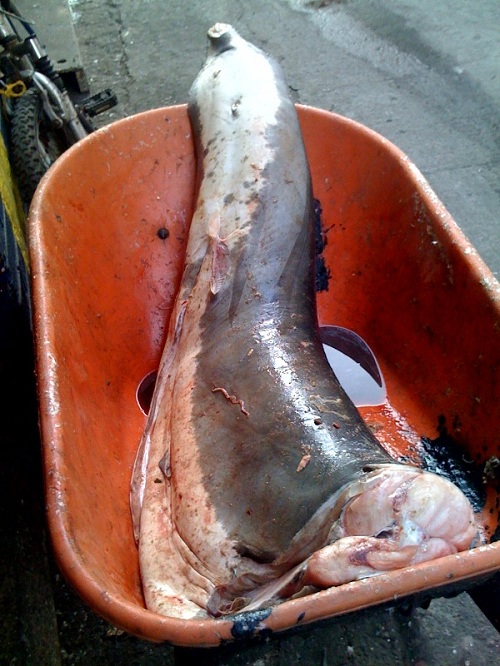
Having spent a considerable amount of time filming the
great white sharks of Isla Guadalupe, I am always dismayed with reports like this one from SharkDiver.com:
Great white sharks "more endangered than tigers?" - Very likelyResearchers in California and around the world are raising concerns about the
population statistics of white sharks in our oceans.
Some are suggesting the population numbers are less than even tiger shark populations worldwide...and we would agree with that assessment.
For the past 5 years
Shark Diver has been monitoring one small fish market in Ensenada, Mexico. What we have found is a thriving white shark fishery sold as "swordfish" for 60-100 peso per kilo on most days.
This image came from a recent trip down to the market with Captain Greg Grivetto from Horizon Charters in late 2009.
We were there to document the take of white sharks and did not have to wait long. Within 10 minutes of our arrival this 6-foot animal showed up. It was a female "young of the year."
Up and down the coast of Mexico and Baja these animals are regularly taken by small co-operatives who drop long lines overnight seeking more profitable species like swordfish and tuna.
From our conversation with local fishermen in Ensenada these white shark pups are not being targeted, they are an unfortunate by-product of a local fishery, and most animals arrive dead at their boats to be sold later in the day.
Direct evidence of a younger generation of sharks that never get to add to the population cycle. If the numbers of animals at this one small fishing port are evidence of a larger fishery, we might suggest the entire population is at risk, if not declining.
Tracking data, showing these same animals moving into the Sea of Cortez for extended periods of time, do not bode well for their survivability in this well-known, and notorious, hook-filled environment.